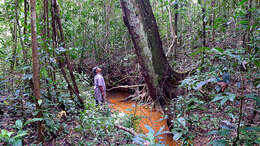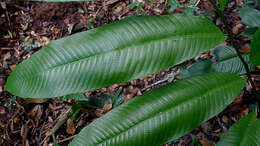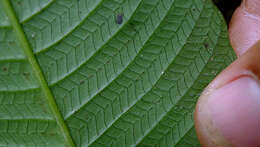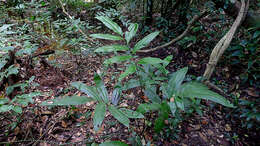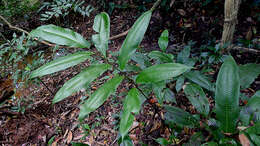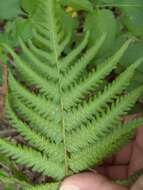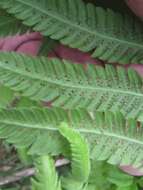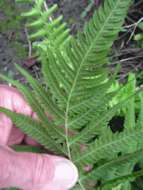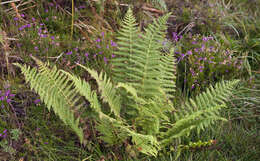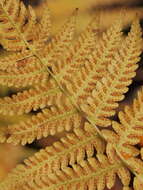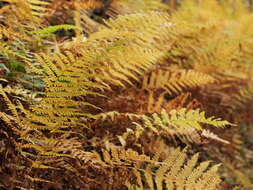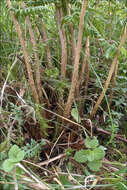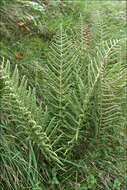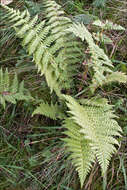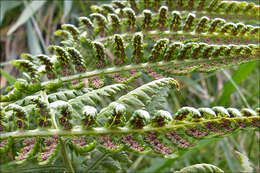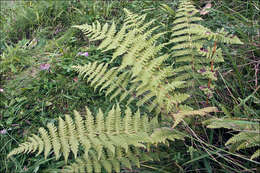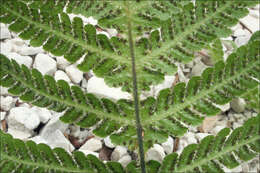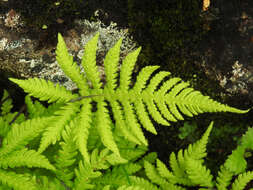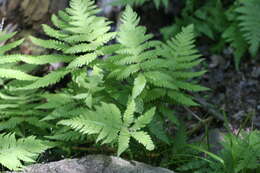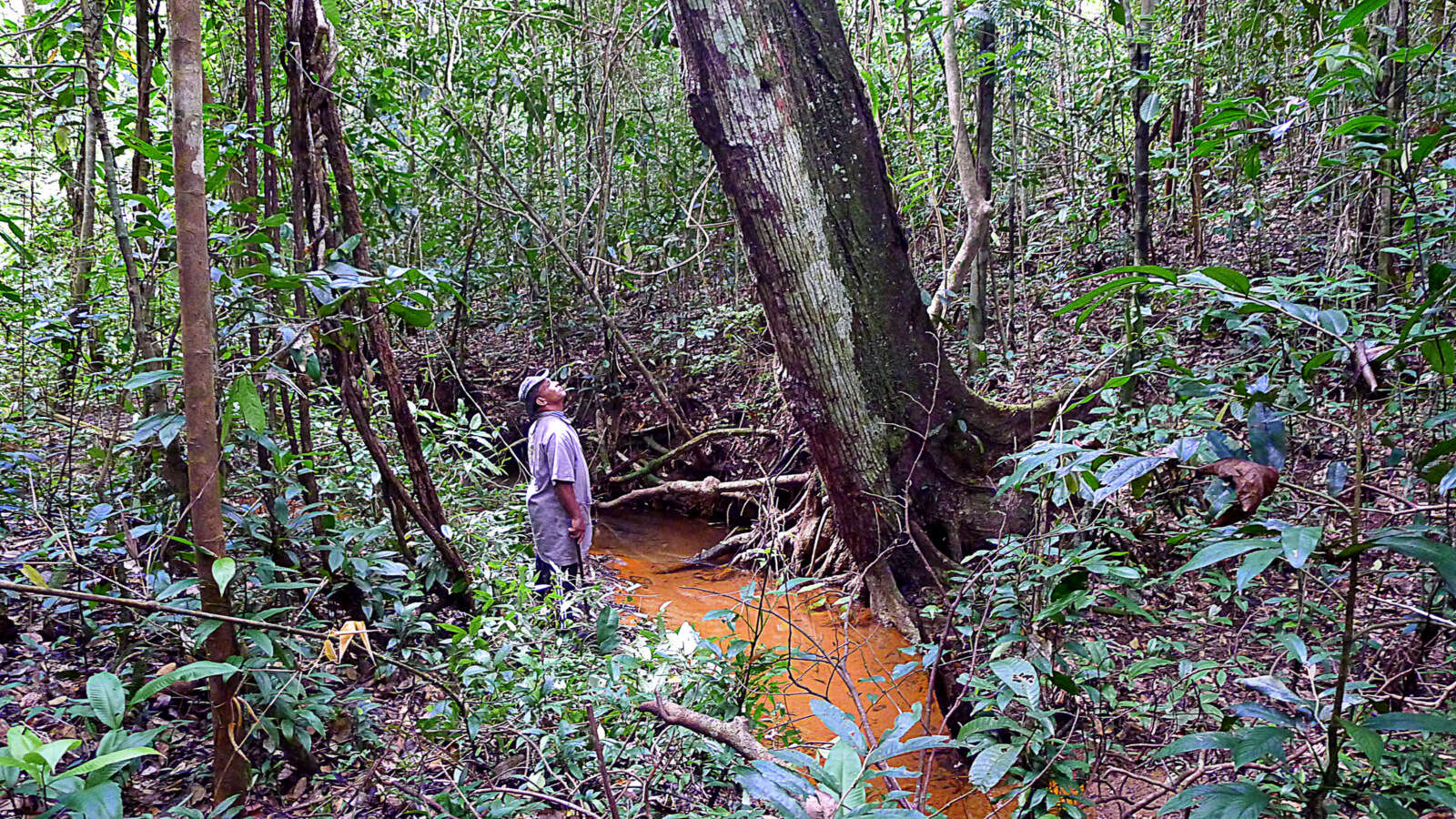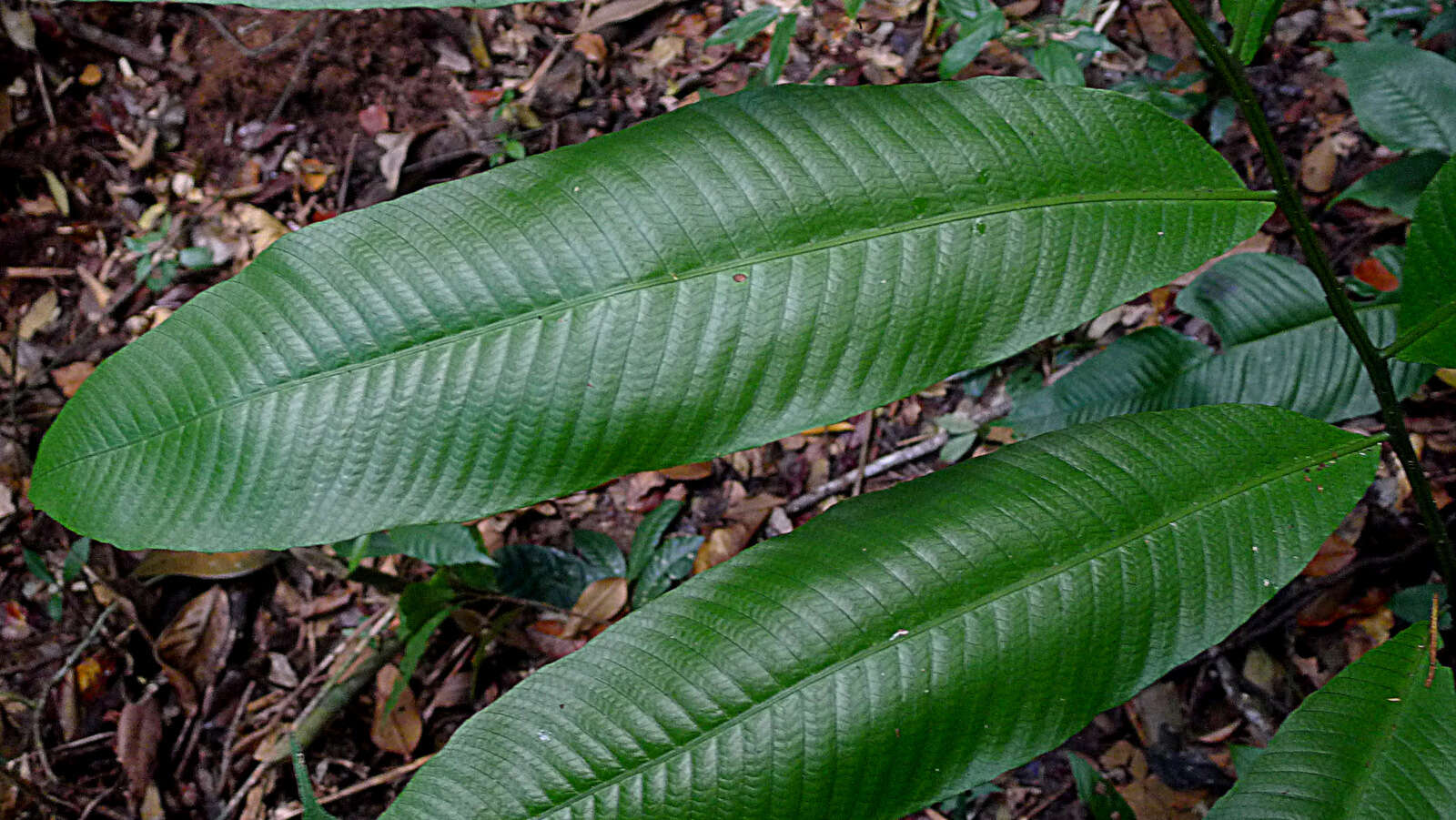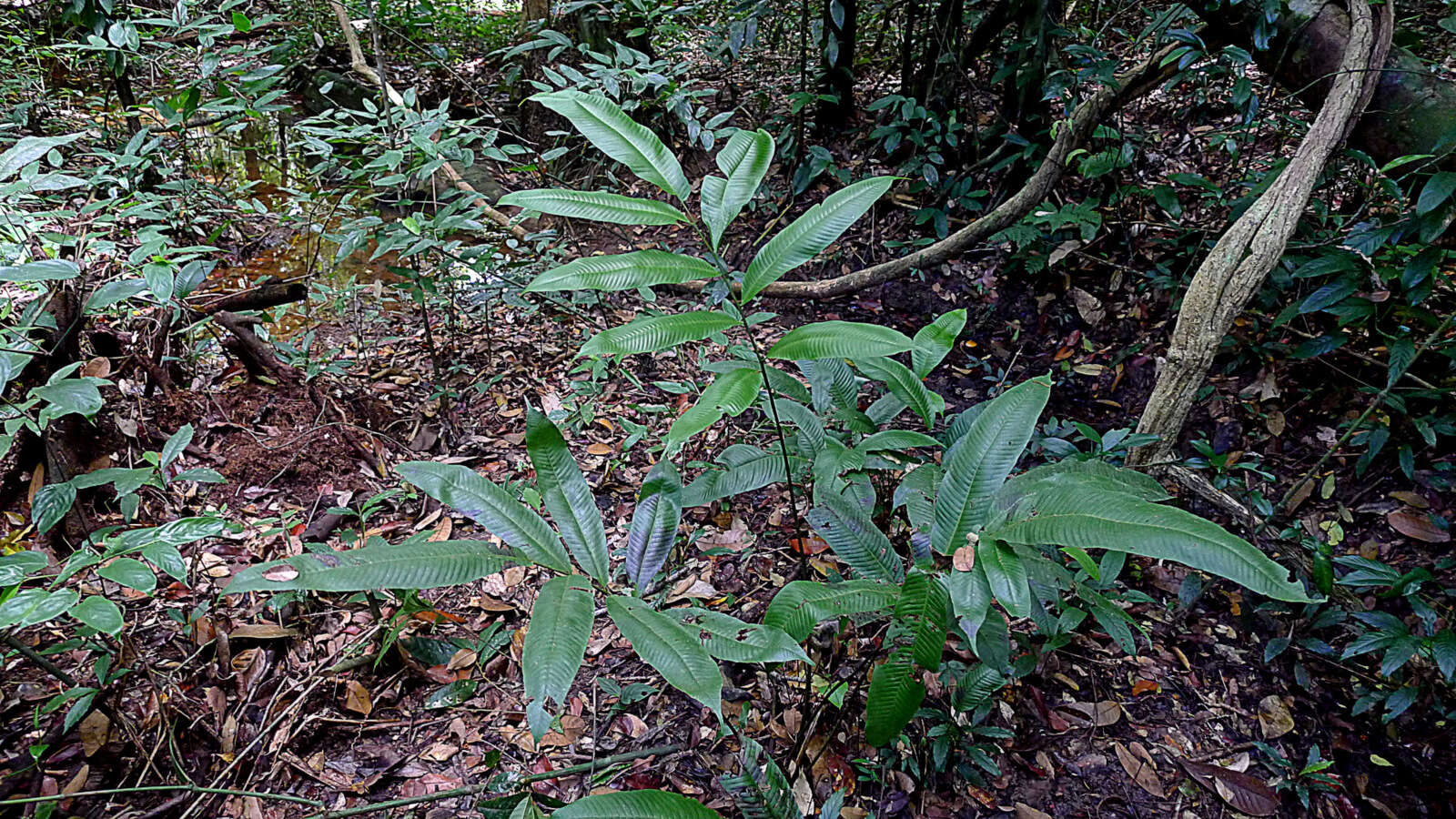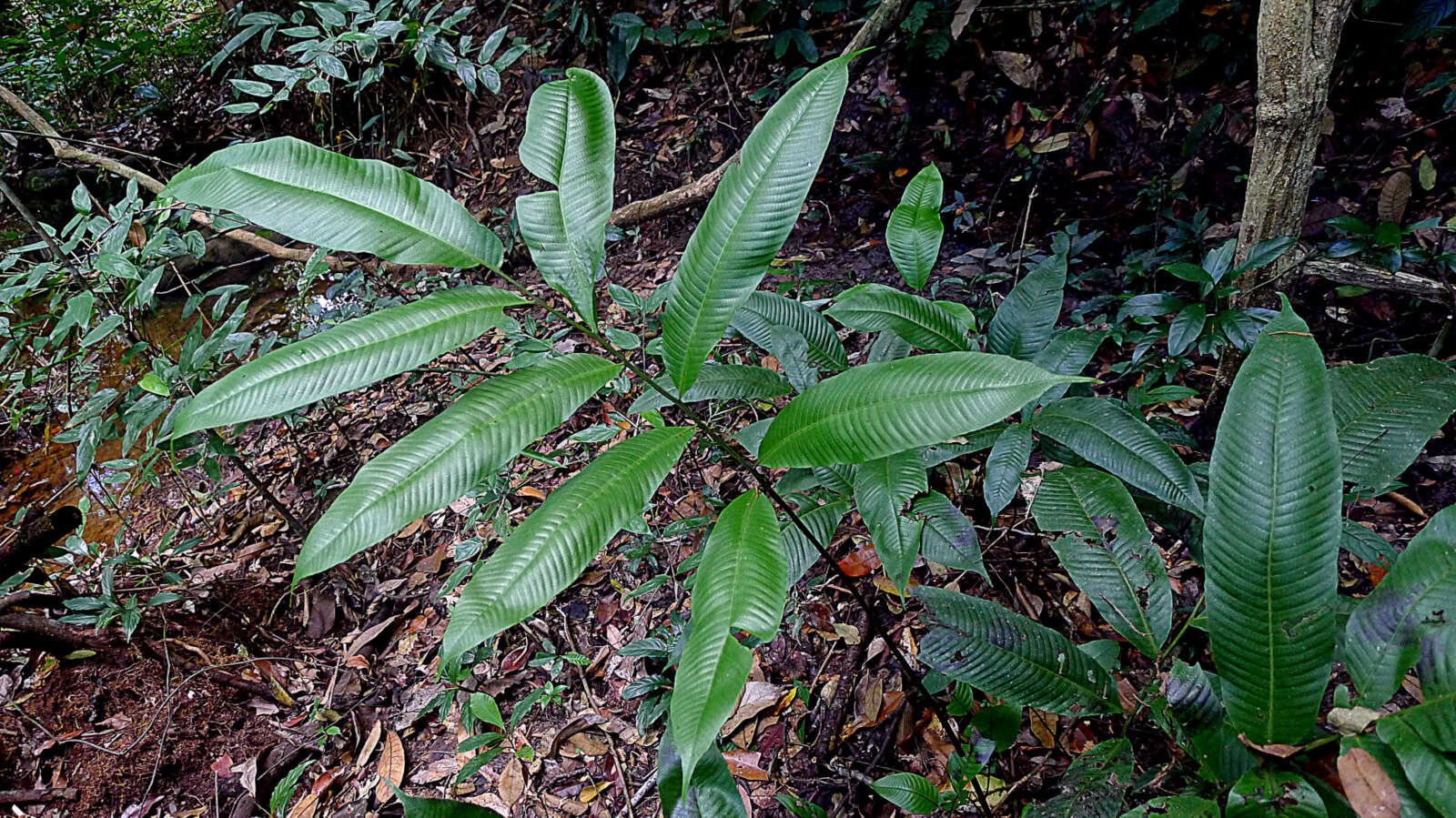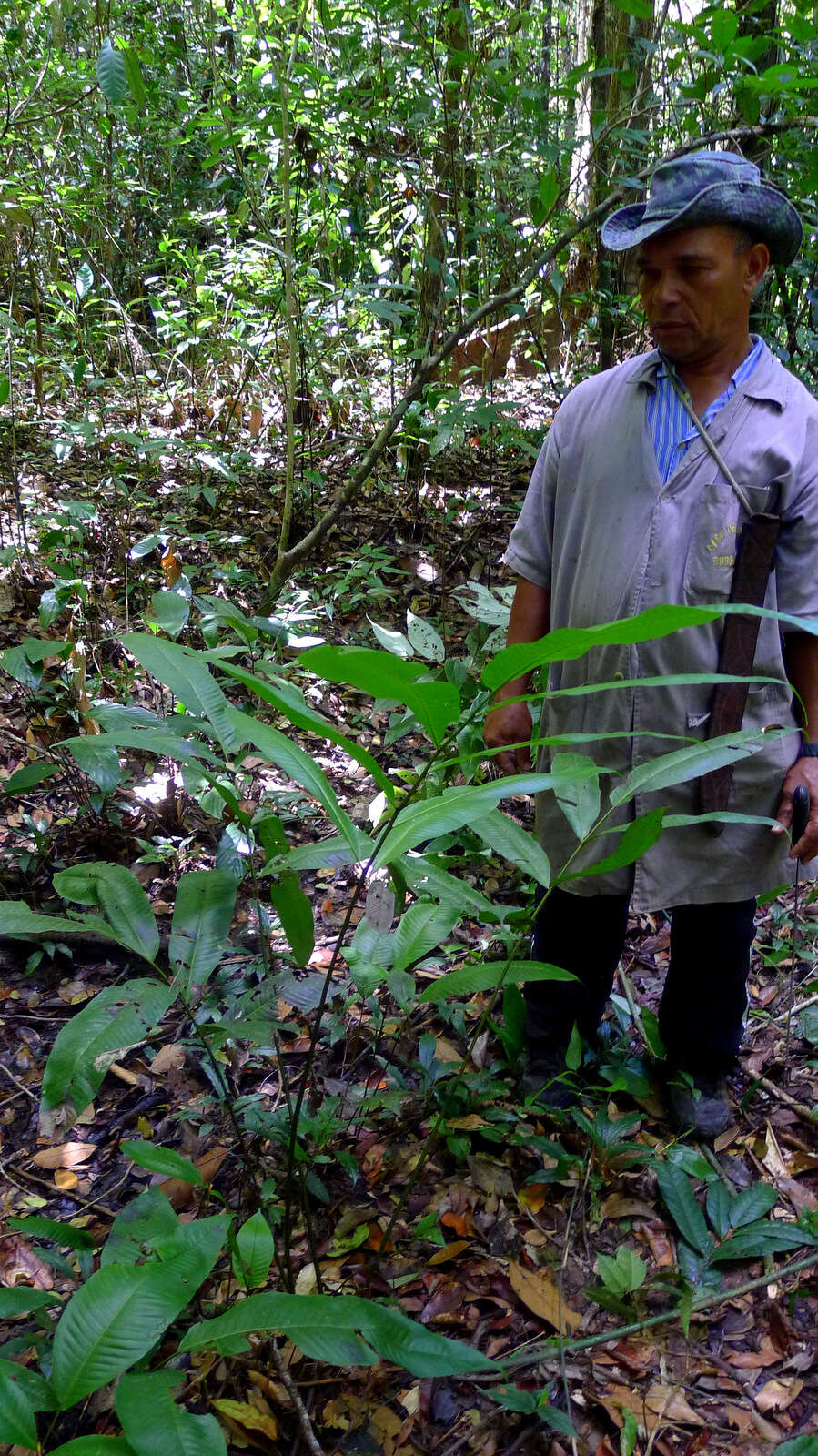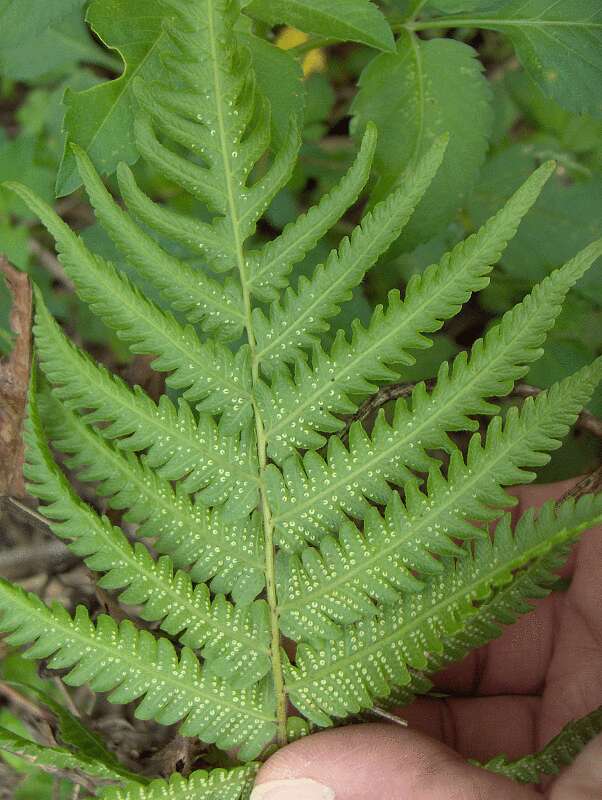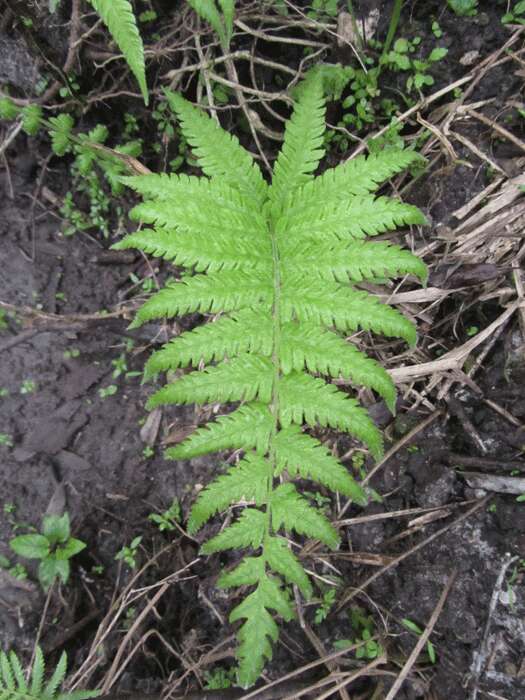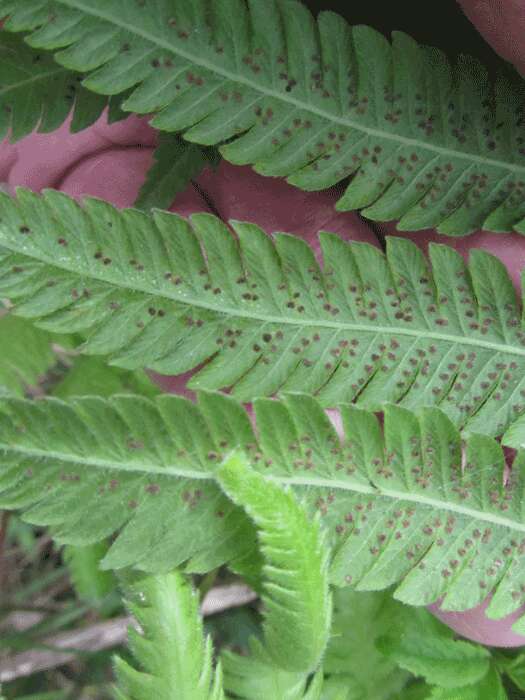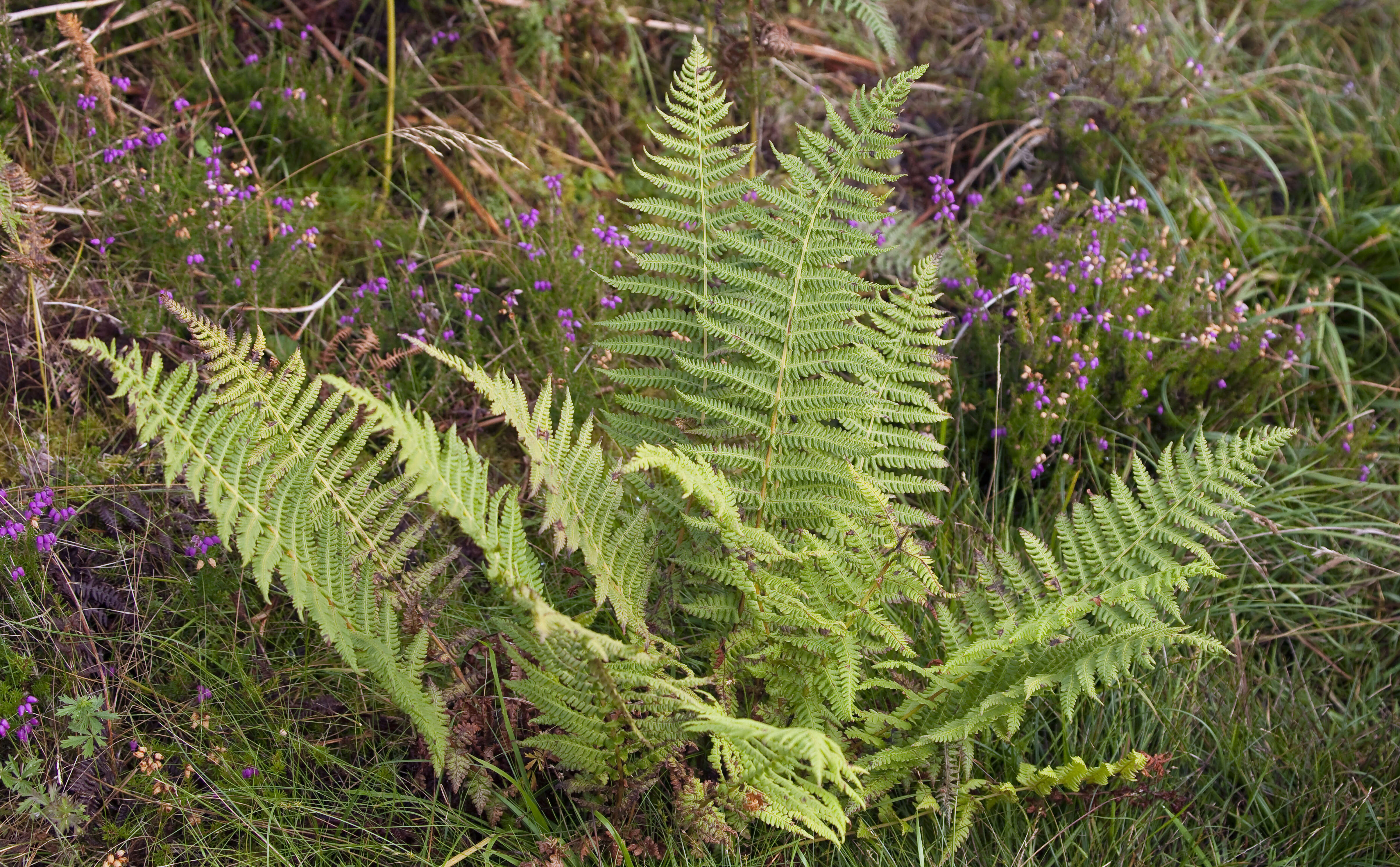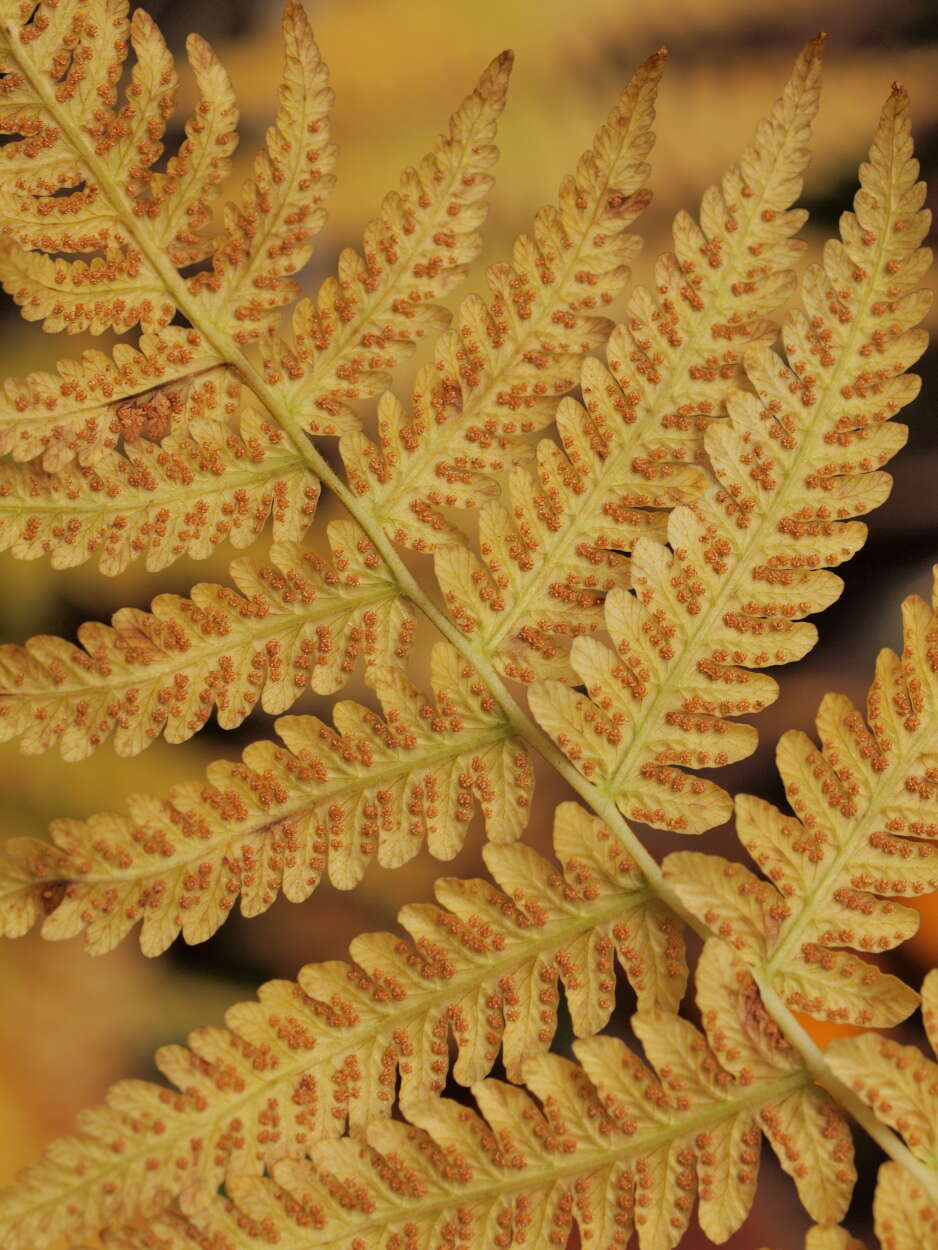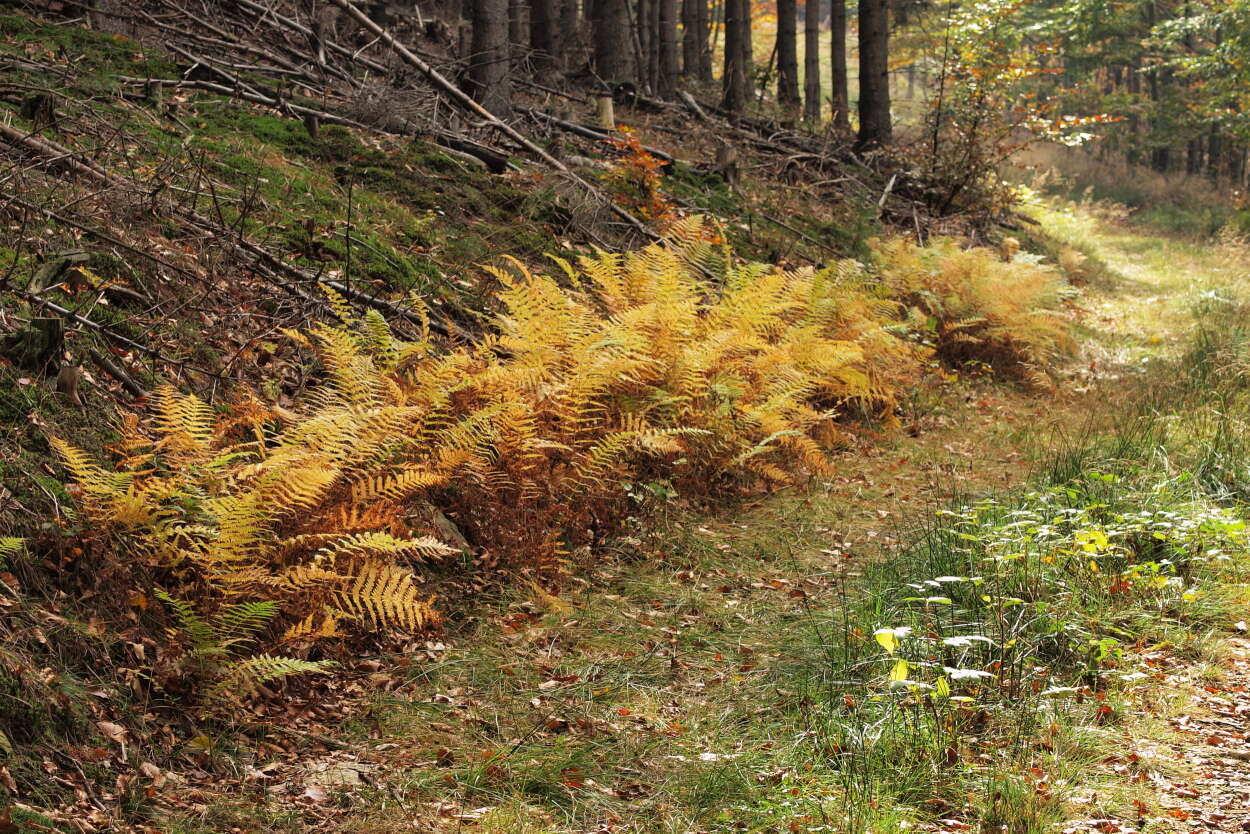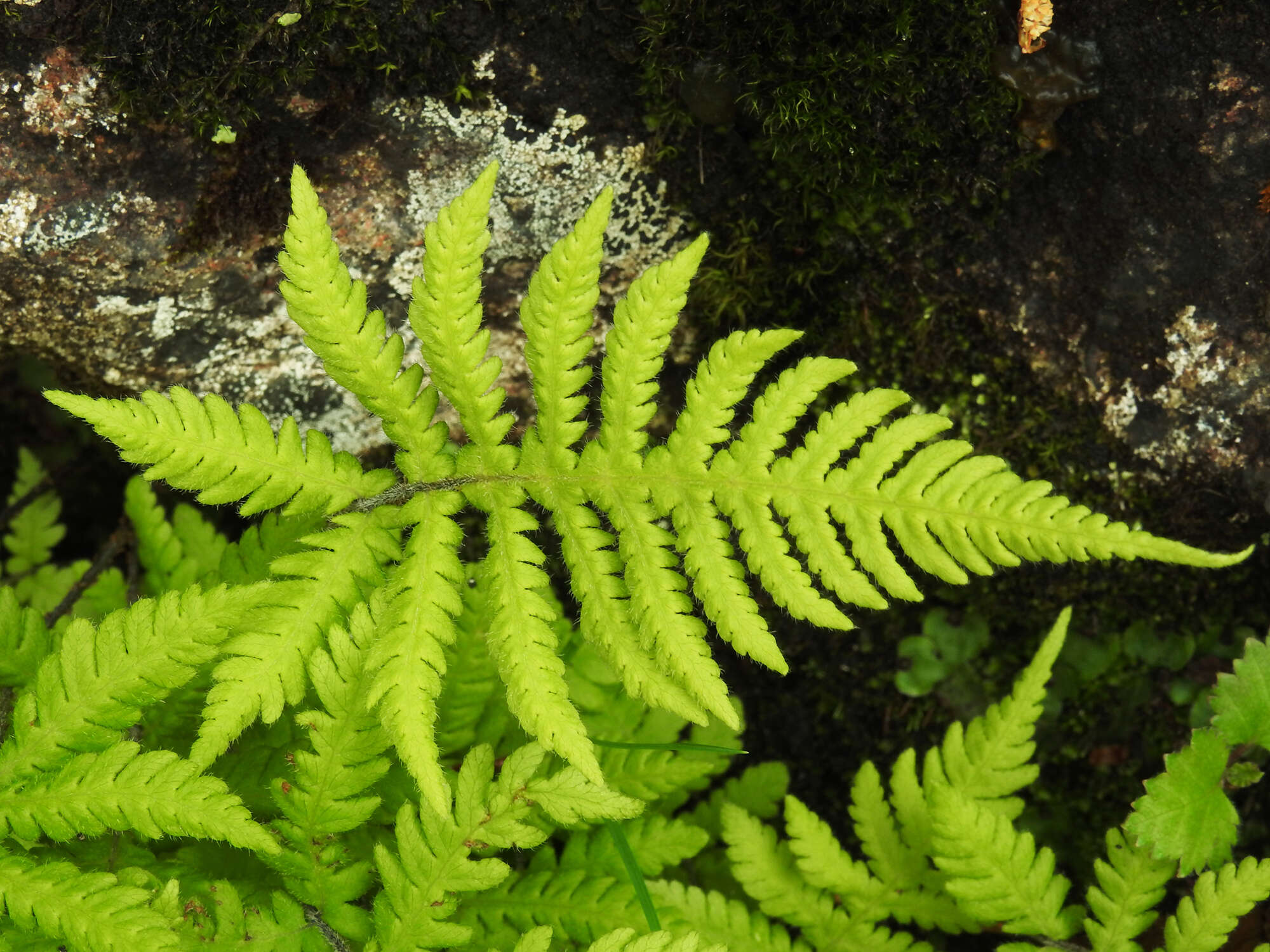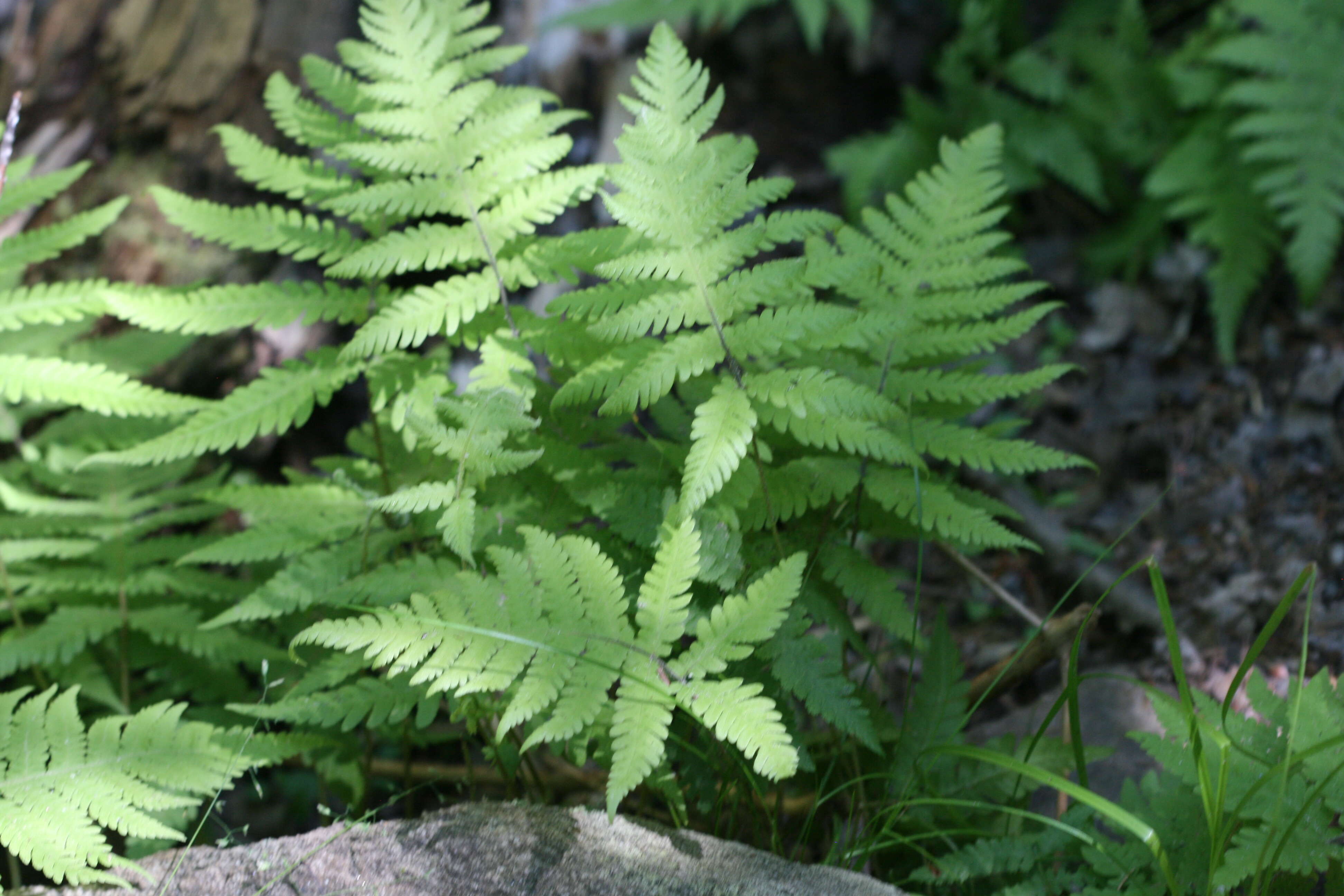-
Habitat of Thelypteris macrophylla (Kunze) Morton.Jos Carlos Mendes facing an Eriotheca sp., Malvaceae.
-
-
-
-
-
-
-
Florida, United States
-
Florida, United States
-
Florida, United States
-
This fern is common in damp open places in north and west Britain, but less so in the southeast. It looks superficially like Male Fern (Dryopteris filix-mas) but is not closely related. The pinnae are more pointed, the sori and scales differ, and a useful distinguishing character is that the grooves on the top of the main rachis and the pinna-rachises (costae) are not connected in this species, but are in Male Fern. North Mull, Sept 9th 2011, I11-0324.
-
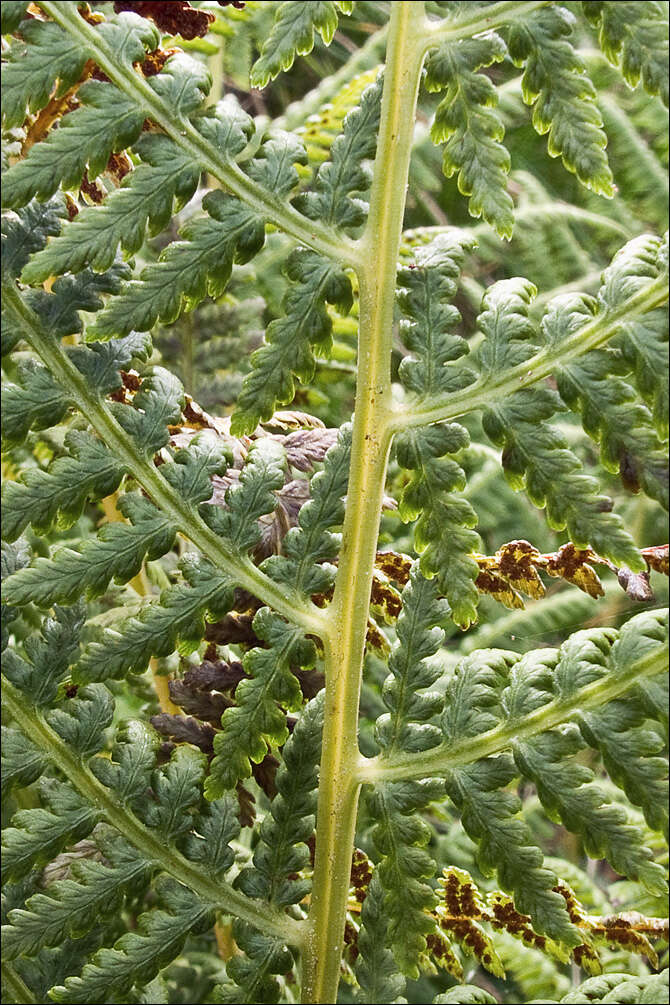
Thelypteris limbosperma (All.) Fuchs, syn.: Lastera oreopteris (Ehrh) Bory, Oreopteris limbosperma (Allioni) Holub, Polypodium limbospermum All., Dryopteris oreopteris (Ehrh.) Maxon, Nephrodium oreopteris (Ehrh.) Desv., Polystichum oreopteris (Ehrh.) DC.Sweet mountain fern, Lemon-scented fern, DE: Bergfarn, Gebirgs-LappenfarnSlo.: navadna krpaaDat.: Oct. 2. 2010Lat.: 46.03707 Long.: 14.02145Code: Bot_462/2010_IMG2584 Habitat: grassland, almost flat terrain, alluvial ground, sunny place, exposed to direct rain; average precipitations 2.000-2.600 mm/year, average temperature 8-10 deg C, elevation 320 m (1.050 feet), Dinaric phytogeographical region. Substratum: soil.Place: Idrijsko, Spodnja Kanomlja village, north of confluence of rivers Kanomljica and Idrijca, Posoje, Slovenia EC. Comment: Ferns are beautiful plants almost without exception. They are attractive not so much regarding their color but much so because of their delicate, archaic, graphic appearance. Yet, they are not easy to be recognized and be properly named. This requires experience, sensitive eye and good visual memory. Taxonomically all ferns underwent numerous, even radical, changes (look at the names of synonyms above!).Thelypteris limbosperma can be a quite stout plant up to 1.2 m tall. Blades are one-pinnate-pinnatifid, ovate, characteristically tapering at the base. The plant is a deciduous fern (blades deteriorate during winter). It is a widely scattered, Euro-Siberian and North American plant, found also in almost whole Slovenia. But it is not really a common plant in spite of its Slovenian name (navadna => common). It prefers siliceous, acid ground, which is not in abundance in my country.Ref.:(1) D. Aeschimann, K. Lauber, D.M. Moser, J.P. Theurillat, Flora Alpina, Vol. 1., Haupt (2004), p 70.(2) M.A. Fischer, W. Adler, K. Oswald, Exkursionsflora fr sterreich, Liechtenstein und Sdtirol, LO Landesmuseen, Linz, Austria (2005), p 237.(3) A. Martini et all., Mala Flora Slovenije (Flora of Slovenia - Key) (in Slovenian), Tehnina Zaloba Slovenije (2007), p 93. (4)
hardyfernlibrary.com/ferns/listSpecies.cfm?Auto=98 (accessed Sept. 28. 2017)
-
2010-10-10 Burgenland, district Oberpullendorf (mixed beech-spruce forest, 750 m AMSL).Sori (ripe).German name: Bergfarn
-
2010-10-10 Burgenland, district Oberpullendorf (mixed beech-spruce forest, 750 m AMSL).German name: Bergfarn
-
2010-10-10 Burgenland, district Oberpullendorf (mixed beech-spruce forest, 750 m AMSL).Habitat.German name: Bergfarn
-
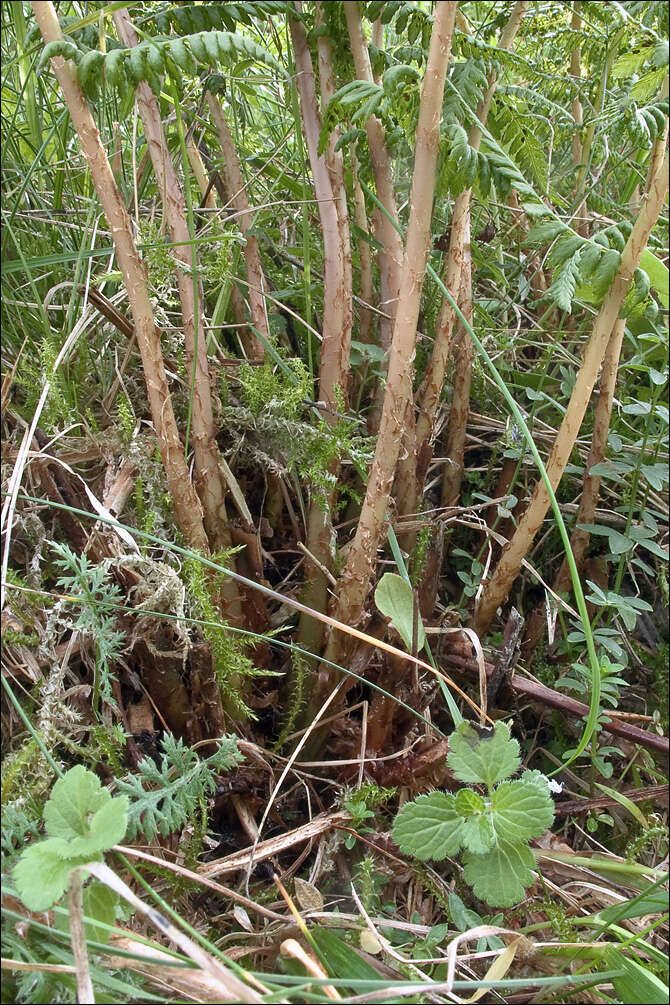
Thelypteris limbosperma (All.) Fuchs, syn.: Lastera oreopteris (Ehrh) Bory, Oreopteris limbosperma (Allioni) Holub, Polypodium limbospermum All., Dryopteris oreopteris (Ehrh.) Maxon, Nephrodium oreopteris (Ehrh.) Desv., Polystichum oreopteris (Ehrh.) DC.Sweet mountain fern, Lemon-scented fern, DE: Bergfarn, Gebirgs-LappenfarnSlo.: navadna krpaaDat.: Oct. 2. 2010Lat.: 46.03707 Long.: 14.02145Code: Bot_462/2010_IMG2584 Habitat: grassland, almost flat terrain, alluvial ground, sunny place, exposed to direct rain; average precipitations 2.000-2.600 mm/year, average temperature 8-10 deg C, elevation 320 m (1.050 feet), Dinaric phytogeographical region. Substratum: soil.Place: Idrijsko, Spodnja Kanomlja village, north of confluence of rivers Kanomljica and Idrijca, Posoje, Slovenia EC. Comment: Ferns are beautiful plants almost without exception. They are attractive not so much regarding their color but much so because of their delicate, archaic, graphic appearance. Yet, they are not easy to be recognized and be properly named. This requires experience, sensitive eye and good visual memory. Taxonomically all ferns underwent numerous, even radical, changes (look at the names of synonyms above!).Thelypteris limbosperma can be a quite stout plant up to 1.2 m tall. Blades are one-pinnate-pinnatifid, ovate, characteristically tapering at the base. The plant is a deciduous fern (blades deteriorate during winter). It is a widely scattered, Euro-Siberian and North American plant, found also in almost whole Slovenia. But it is not really a common plant in spite of its Slovenian name (navadna => common). It prefers siliceous, acid ground, which is not in abundance in my country.Ref.:(1) D. Aeschimann, K. Lauber, D.M. Moser, J.P. Theurillat, Flora Alpina, Vol. 1., Haupt (2004), p 70.(2) M.A. Fischer, W. Adler, K. Oswald, Exkursionsflora fr sterreich, Liechtenstein und Sdtirol, LO Landesmuseen, Linz, Austria (2005), p 237.(3) A. Martini et all., Mala Flora Slovenije (Flora of Slovenia - Key) (in Slovenian), Tehnina Zaloba Slovenije (2007), p 93. (4)
hardyfernlibrary.com/ferns/listSpecies.cfm?Auto=98 (accessed Sept. 28. 2017)
-
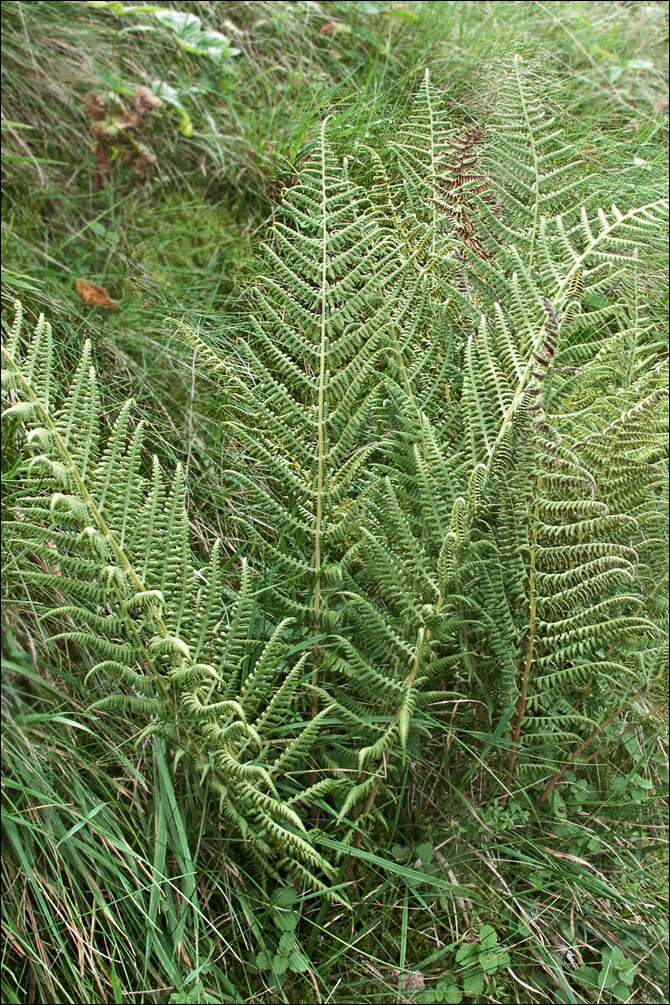
Thelypteris limbosperma (All.) Fuchs, syn.: Lastera oreopteris (Ehrh) Bory, Oreopteris limbosperma (Allioni) Holub, Polypodium limbospermum All., Dryopteris oreopteris (Ehrh.) Maxon, Nephrodium oreopteris (Ehrh.) Desv., Polystichum oreopteris (Ehrh.) DC.Sweet mountain fern, Lemon-scented fern, DE: Bergfarn, Gebirgs-LappenfarnSlo.: navadna krpaaDat.: Oct. 2. 2010Lat.: 46.03707 Long.: 14.02145Code: Bot_462/2010_IMG2584 Habitat: grassland, almost flat terrain, alluvial ground, sunny place, exposed to direct rain; average precipitations 2.000-2.600 mm/year, average temperature 8-10 deg C, elevation 320 m (1.050 feet), Dinaric phytogeographical region. Substratum: soil.Place: Idrijsko, Spodnja Kanomlja village, north of confluence of rivers Kanomljica and Idrijca, Posoje, Slovenia EC. Comment: Ferns are beautiful plants almost without exception. They are attractive not so much regarding their color but much so because of their delicate, archaic, graphic appearance. Yet, they are not easy to be recognized and be properly named. This requires experience, sensitive eye and good visual memory. Taxonomically all ferns underwent numerous, even radical, changes (look at the names of synonyms above!).Thelypteris limbosperma can be a quite stout plant up to 1.2 m tall. Blades are one-pinnate-pinnatifid, ovate, characteristically tapering at the base. The plant is a deciduous fern (blades deteriorate during winter). It is a widely scattered, Euro-Siberian and North American plant, found also in almost whole Slovenia. But it is not really a common plant in spite of its Slovenian name (navadna => common). It prefers siliceous, acid ground, which is not in abundance in my country.Ref.:(1) D. Aeschimann, K. Lauber, D.M. Moser, J.P. Theurillat, Flora Alpina, Vol. 1., Haupt (2004), p 70.(2) M.A. Fischer, W. Adler, K. Oswald, Exkursionsflora fr sterreich, Liechtenstein und Sdtirol, LO Landesmuseen, Linz, Austria (2005), p 237.(3) A. Martini et all., Mala Flora Slovenije (Flora of Slovenia - Key) (in Slovenian), Tehnina Zaloba Slovenije (2007), p 93. (4)
hardyfernlibrary.com/ferns/listSpecies.cfm?Auto=98 (accessed Sept. 28. 2017)
-
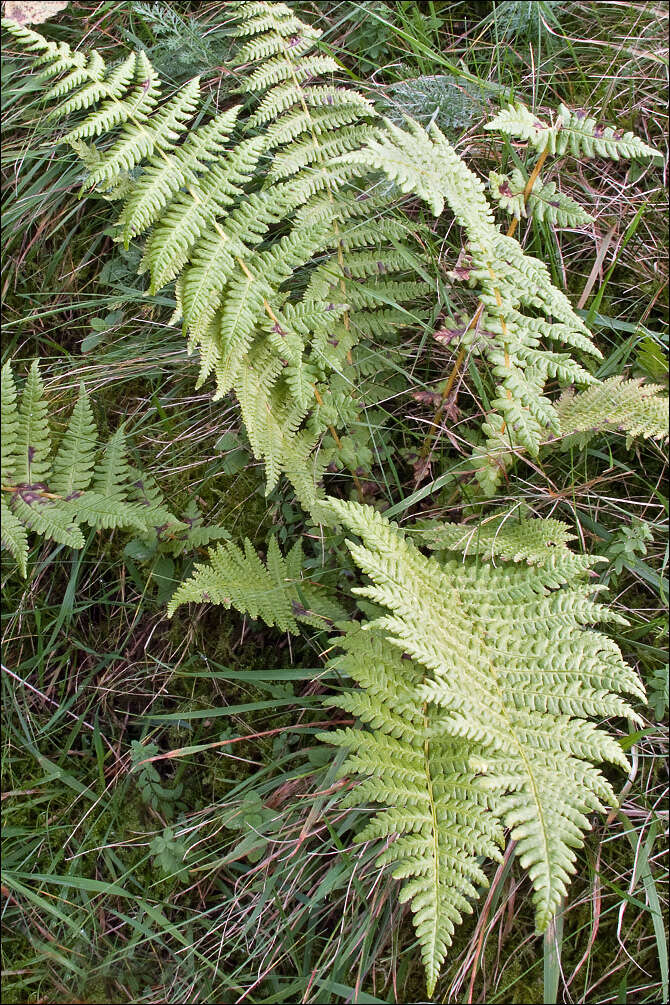
Thelypteris limbosperma (All.) Fuchs, syn.: Lastera oreopteris (Ehrh) Bory, Oreopteris limbosperma (Allioni) Holub, Polypodium limbospermum All., Dryopteris oreopteris (Ehrh.) Maxon, Nephrodium oreopteris (Ehrh.) Desv., Polystichum oreopteris (Ehrh.) DC.Sweet mountain fern, Lemon-scented fern, DE: Bergfarn, Gebirgs-LappenfarnSlo.: navadna krpaaDat.: Oct. 2. 2010Lat.: 46.03707 Long.: 14.02145Code: Bot_462/2010_IMG2584 Habitat: grassland, almost flat terrain, alluvial ground, sunny place, exposed to direct rain; average precipitations 2.000-2.600 mm/year, average temperature 8-10 deg C, elevation 320 m (1.050 feet), Dinaric phytogeographical region. Substratum: soil.Place: Idrijsko, Spodnja Kanomlja village, north of confluence of rivers Kanomljica and Idrijca, Posoje, Slovenia EC. Comment: Ferns are beautiful plants almost without exception. They are attractive not so much regarding their color but much so because of their delicate, archaic, graphic appearance. Yet, they are not easy to be recognized and be properly named. This requires experience, sensitive eye and good visual memory. Taxonomically all ferns underwent numerous, even radical, changes (look at the names of synonyms above!).Thelypteris limbosperma can be a quite stout plant up to 1.2 m tall. Blades are one-pinnate-pinnatifid, ovate, characteristically tapering at the base. The plant is a deciduous fern (blades deteriorate during winter). It is a widely scattered, Euro-Siberian and North American plant, found also in almost whole Slovenia. But it is not really a common plant in spite of its Slovenian name (navadna => common). It prefers siliceous, acid ground, which is not in abundance in my country.Ref.:(1) D. Aeschimann, K. Lauber, D.M. Moser, J.P. Theurillat, Flora Alpina, Vol. 1., Haupt (2004), p 70.(2) M.A. Fischer, W. Adler, K. Oswald, Exkursionsflora fr sterreich, Liechtenstein und Sdtirol, LO Landesmuseen, Linz, Austria (2005), p 237.(3) A. Martini et all., Mala Flora Slovenije (Flora of Slovenia - Key) (in Slovenian), Tehnina Zaloba Slovenije (2007), p 93. (4)
hardyfernlibrary.com/ferns/listSpecies.cfm?Auto=98 (accessed Sept. 28. 2017)
-
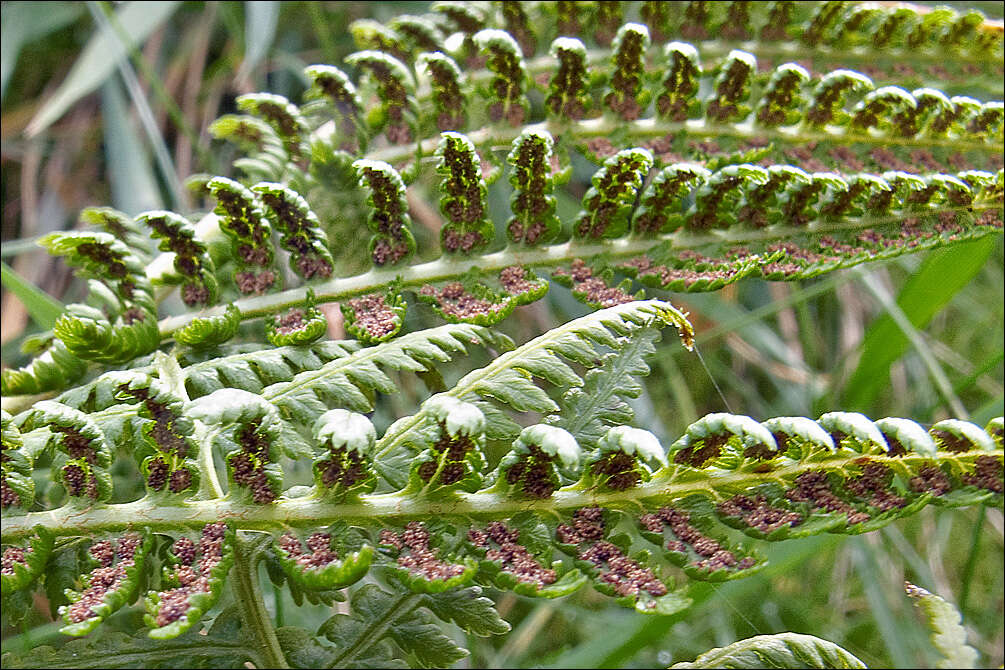
Thelypteris limbosperma (All.) Fuchs, syn.: Lastera oreopteris (Ehrh) Bory, Oreopteris limbosperma (Allioni) Holub, Polypodium limbospermum All., Dryopteris oreopteris (Ehrh.) Maxon, Nephrodium oreopteris (Ehrh.) Desv., Polystichum oreopteris (Ehrh.) DC.Sweet mountain fern, Lemon-scented fern, DE: Bergfarn, Gebirgs-LappenfarnSlo.: navadna krpaaDat.: Oct. 2. 2010Lat.: 46.03707 Long.: 14.02145Code: Bot_462/2010_IMG2584 Habitat: grassland, almost flat terrain, alluvial ground, sunny place, exposed to direct rain; average precipitations 2.000-2.600 mm/year, average temperature 8-10 deg C, elevation 320 m (1.050 feet), Dinaric phytogeographical region. Substratum: soil.Place: Idrijsko, Spodnja Kanomlja village, north of confluence of rivers Kanomljica and Idrijca, Posoje, Slovenia EC. Comment: Ferns are beautiful plants almost without exception. They are attractive not so much regarding their color but much so because of their delicate, archaic, graphic appearance. Yet, they are not easy to be recognized and be properly named. This requires experience, sensitive eye and good visual memory. Taxonomically all ferns underwent numerous, even radical, changes (look at the names of synonyms above!).Thelypteris limbosperma can be a quite stout plant up to 1.2 m tall. Blades are one-pinnate-pinnatifid, ovate, characteristically tapering at the base. The plant is a deciduous fern (blades deteriorate during winter). It is a widely scattered, Euro-Siberian and North American plant, found also in almost whole Slovenia. But it is not really a common plant in spite of its Slovenian name (navadna => common). It prefers siliceous, acid ground, which is not in abundance in my country.Ref.:(1) D. Aeschimann, K. Lauber, D.M. Moser, J.P. Theurillat, Flora Alpina, Vol. 1., Haupt (2004), p 70.(2) M.A. Fischer, W. Adler, K. Oswald, Exkursionsflora fr sterreich, Liechtenstein und Sdtirol, LO Landesmuseen, Linz, Austria (2005), p 237.(3) A. Martini et all., Mala Flora Slovenije (Flora of Slovenia - Key) (in Slovenian), Tehnina Zaloba Slovenije (2007), p 93. (4)
hardyfernlibrary.com/ferns/listSpecies.cfm?Auto=98 (accessed Sept. 28. 2017)
-

Thelypteris limbosperma (All.) Fuchs, syn.: Lastera oreopteris (Ehrh) Bory, Oreopteris limbosperma (Allioni) Holub, Polypodium limbospermum All., Dryopteris oreopteris (Ehrh.) Maxon, Nephrodium oreopteris (Ehrh.) Desv., Polystichum oreopteris (Ehrh.) DC.Sweet mountain fern, Lemon-scented fern, DE: Bergfarn, Gebirgs-LappenfarnSlo.: navadna krpaaDat.: Oct. 2. 2010Lat.: 46.03707 Long.: 14.02145Code: Bot_462/2010_IMG2584 Habitat: grassland, almost flat terrain, alluvial ground, sunny place, exposed to direct rain; average precipitations 2.000-2.600 mm/year, average temperature 8-10 deg C, elevation 320 m (1.050 feet), Dinaric phytogeographical region. Substratum: soil.Place: Idrijsko, Spodnja Kanomlja village, north of confluence of rivers Kanomljica and Idrijca, Posoje, Slovenia EC. Comment: Ferns are beautiful plants almost without exception. They are attractive not so much regarding their color but much so because of their delicate, archaic, graphic appearance. Yet, they are not easy to be recognized and be properly named. This requires experience, sensitive eye and good visual memory. Taxonomically all ferns underwent numerous, even radical, changes (look at the names of synonyms above!).Thelypteris limbosperma can be a quite stout plant up to 1.2 m tall. Blades are one-pinnate-pinnatifid, ovate, characteristically tapering at the base. The plant is a deciduous fern (blades deteriorate during winter). It is a widely scattered, Euro-Siberian and North American plant, found also in almost whole Slovenia. But it is not really a common plant in spite of its Slovenian name (navadna => common). It prefers siliceous, acid ground, which is not in abundance in my country.Ref.:(1) D. Aeschimann, K. Lauber, D.M. Moser, J.P. Theurillat, Flora Alpina, Vol. 1., Haupt (2004), p 70.(2) M.A. Fischer, W. Adler, K. Oswald, Exkursionsflora fr sterreich, Liechtenstein und Sdtirol, LO Landesmuseen, Linz, Austria (2005), p 237.(3) A. Martini et all., Mala Flora Slovenije (Flora of Slovenia - Key) (in Slovenian), Tehnina Zaloba Slovenije (2007), p 93. (4)
hardyfernlibrary.com/ferns/listSpecies.cfm?Auto=98 (accessed Sept. 28. 2017)
-

Phegopteris connectilis (Michx.)Watt, syn.: Dryopteris phegopteris (L.) Christ.,Thelypteris phegopteris (L.) Sloss., Lastrea phegopteris (L.) Bory.Beech Fern, DE: BuchenfarnSlo.: navadna bukovicaDat.: July 09. 2014Lat.: 46.39822 Long.: 13.70223Code: Bot_810/2014_IMG6151Habitat: overgrown old river deposits, edge of Fagus sylvatica forest, calcareous ground, locally acid ground (Vaccinium myrtillus dominant in ground vegetation), locally almost flat terrain, half shade, partly protected from direct rain by tree canopies, average precipitations ~ 3.000 mm/year, average temperature 4-5 deg C, elevation 995 m (3.300 feet), alpine phytogeographical region. Substratum: soil.Place: Zadnja Trenta valley, Zapodn, right bank of (dry) Soa river bed, next to the trail to Planina Zapotok, East Julian Alps, Posoje, Slovenia EC Comment: Ferns are often neglected plants even by nature lovers. Allegedly they look 'all the same'. Truly they are not colorful and have no conspicuous sexual organs and in Europe some kind of green is almost all what they can display in terms of color. However, in a sense of graphical impact they can be strikingly beautiful. The richness of delicately shaped leaves is surprising. Species differ in habitus and morphological details, which are sometimes inconspicuous to such an extent, that proper determination of species is quite a demanding task and a trained eye is highly welcome.Phegopteris connectilis is relatively easy to determine. It is a common, widespread, Euro-Siberian, North American fern, growing in all parts of the Alps, but in spite of this, it is seldom recognized by its name. Rather small but graceful plant can be recognized by its compound triangular or arrowhead-shaped leaves - fronds, which are pinnately divided. Their leaflets are further pinnately cleft almost to the midrib and, what is particularly characteristic for this species, broadly attached to the central axis of the leaf (see Fig.6.). Another easy to recognized trait is orientation of both largest leaflets at the bottom of the leaf. Both point backwards while all other leaflets point either forward or stand perpendicular to the central leaf axis (see Fig.2.). Spore producing organs in sori - black 'dots' on usually underside of fertile fronds - are positioned near the edge of the leaflets and have no umbrella-like protection cover called indusium like many other ferns.Ref.:(1) M.A. Fischer, W. Adler, K. Oswald, Exkursionsflora sterreich Liechtenstein, Sdtirol, LO Landesmuseen, Linz, Austria (2005), p 237.(2) K. Lauber and G. Wagner, Flora Helvetica, 5. Auflage, Haupt (2012), p 60.(3) A. Martini et all., Mala Flora Slovenije, Tehnina Zaloba Slovenije (2007) (in Slovene), p 94. (4) D. Aeschimann, K. Lauber, D.M. Moser, J.P. Theurillat, Flora Alpina, Vol. 1., Haupt (2004), p 70.
-
Suomi
-
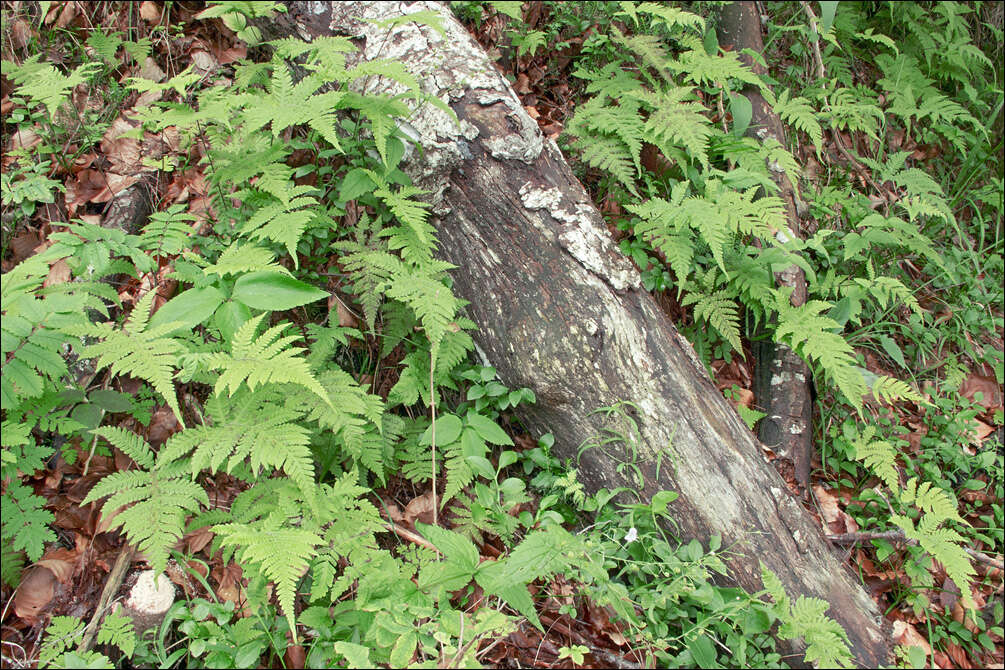
Phegopteris connectilis (Michx.)Watt, syn.: Dryopteris phegopteris (L.) Christ.,Thelypteris phegopteris (L.) Sloss., Lastrea phegopteris (L.) Bory.Beech Fern, DE: BuchenfarnSlo.: navadna bukovicaDat.: July 09. 2014Lat.: 46.39822 Long.: 13.70223Code: Bot_810/2014_IMG6151Habitat: overgrown old river deposits, edge of Fagus sylvatica forest, calcareous ground, locally acid ground (Vaccinium myrtillus dominant in ground vegetation), locally almost flat terrain, half shade, partly protected from direct rain by tree canopies, average precipitations ~ 3.000 mm/year, average temperature 4-5 deg C, elevation 995 m (3.300 feet), alpine phytogeographical region. Substratum: soil.Place: Zadnja Trenta valley, Zapodn, right bank of (dry) Soa river bed, next to the trail to Planina Zapotok, East Julian Alps, Posoje, Slovenia EC Comment: Ferns are often neglected plants even by nature lovers. Allegedly they look 'all the same'. Truly they are not colorful and have no conspicuous sexual organs and in Europe some kind of green is almost all what they can display in terms of color. However, in a sense of graphical impact they can be strikingly beautiful. The richness of delicately shaped leaves is surprising. Species differ in habitus and morphological details, which are sometimes inconspicuous to such an extent, that proper determination of species is quite a demanding task and a trained eye is highly welcome.Phegopteris connectilis is relatively easy to determine. It is a common, widespread, Euro-Siberian, North American fern, growing in all parts of the Alps, but in spite of this, it is seldom recognized by its name. Rather small but graceful plant can be recognized by its compound triangular or arrowhead-shaped leaves - fronds, which are pinnately divided. Their leaflets are further pinnately cleft almost to the midrib and, what is particularly characteristic for this species, broadly attached to the central axis of the leaf (see Fig.6.). Another easy to recognized trait is orientation of both largest leaflets at the bottom of the leaf. Both point backwards while all other leaflets point either forward or stand perpendicular to the central leaf axis (see Fig.2.). Spore producing organs in sori - black 'dots' on usually underside of fertile fronds - are positioned near the edge of the leaflets and have no umbrella-like protection cover called indusium like many other ferns.Ref.:(1) M.A. Fischer, W. Adler, K. Oswald, Exkursionsflora sterreich Liechtenstein, Sdtirol, LO Landesmuseen, Linz, Austria (2005), p 237.(2) K. Lauber and G. Wagner, Flora Helvetica, 5. Auflage, Haupt (2012), p 60.(3) A. Martini et all., Mala Flora Slovenije, Tehnina Zaloba Slovenije (2007) (in Slovene), p 94. (4) D. Aeschimann, K. Lauber, D.M. Moser, J.P. Theurillat, Flora Alpina, Vol. 1., Haupt (2004), p 70.
-
Whitney, Ontario, Canada


